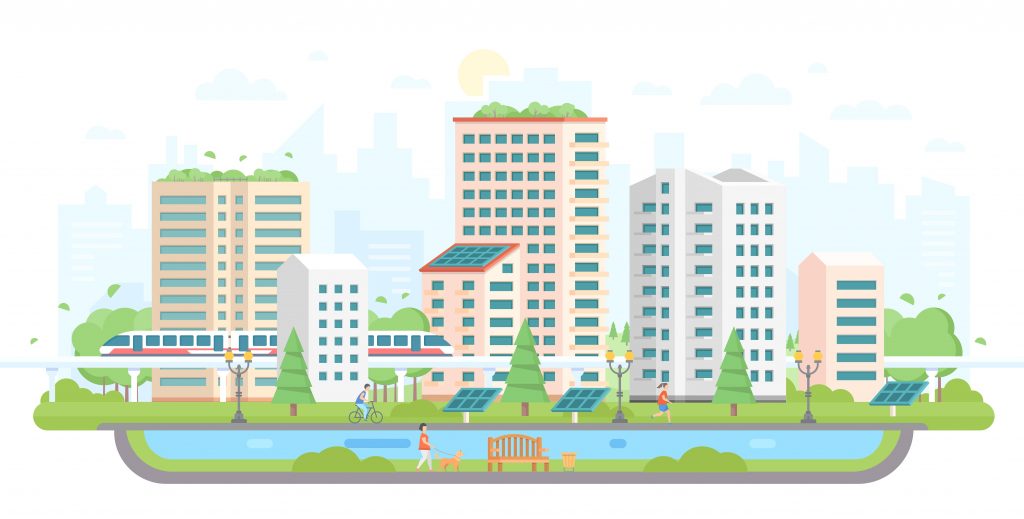
India has become one of the biggest nations when it comes to renewable-based energy. And solar panels make up the majority of this newly installed production capacity. This is part of the government’s push with subsidies on solar panels to achieve more sustainable means of energy production. Which was initially kicked off with a 40GW target for residential rooftop solar.
Unfortunately, so far, we have only been able to achieve around 5GW of installed capacity in residential solar. Which seems quite paltry when you consider how we have expanded our goals regarding renewable energy. From the initial 40GW to over 280GW. A target that is supposed to be met by 2030.
To achieve this lofty goal, we would have to install almost 10GW of rooftop solar capacity each year. Just to meet the goals for decentralized single-household rooftop solar. This is easier said than done when the average household income in India is barely ₹90,000. While the average cost of 1GW of rooftop solar hovers at around ₹60,000, excluding subsidies.
Even if we leave out the cost of the batteries, general maintenance, and any other incidental expenses. This still translates to over 2 years of income for the average household. A hefty sacrifice to make for the greater good, especially in today’s uncertain post-pandemic climate.
This is where government subsidies come in. As they are the most powerful tools that we have to help bring about the decentralization of our power grids. The Indian government already offers various subsidies for different types of renewable ventures. From the central FAME I and II schemes for electric vehicles and charging infrastructure. To state-level net-metering schemes, which encourage the generation of rooftop solar-based energy.
Now, they have gone ahead and streamlined the whole process. So, different state and central subsidies can be availed under a common scheme. Which is open to all the residents of this country. Who wish to invest in a more sustainable future?
Before you begin to calculate the amount of money you can expect in government subsidies. You must first have an idea of the kind of expenditure it would take to install a solar rooftop setup. That can not only match the electricity needs of your own household. But also, hopefully, have enough leftover generation capacity to earn you some profits as well.
To give you an idea of what that might cost, let us take the example of an average middle-class household. Which utilizes most modern appliances that we all consider as standard. Including at least one air conditioning unit that runs for up to 8 months a year.
Such a household would require at least a 3-4kW system on average. To sustain the entire power load of the household at any given moment. So, it would only make sense that the rooftop solar setup must also be of similar power capacity. To give you an idea of what that kind of power generation capacity costs. Here is a chart of the benchmark costs related to grid-connected solar systems for residential households.
| System Size | Average Cost Per W |
| 1 KW | ₹ 51.10 |
| 1 – 2 KW | ₹ 46.98 |
| 2 – 3 KW | ₹ 45.76 |
| 3 – 10 KW | ₹ 44.64 |
| 10 – 100 KW | ₹ 41.64 |
| 100 – 500 KW | ₹ 39.08 |
We have chosen to focus on grid-connected residential solar setups only. As they meet the eligibility criteria for the subsidies offered by the government. While also removing any additional costs related to long-term battery storage. Which, in itself. can add an additional cost of up to ₹15-30K. For every 3-5 years of usage.
You will still have to replace the solar inverter at similar time intervals. Which would also have a similar price range of around ₹15-35K. Depending on the brand and model you go for. But that is part of the maintenance costs that are associated with all types of solar systems. So, we can hardly complain about it.
This comes out to an average investment of around ₹2-4 lakh just for the initial setup. The government understands these economic costs related to establishing solar rooftops. This is why they have also kept the low-end limit for eligibility to the solar subsidy scheme, at around ₹60-70,000. Which is pretty affordable considering what such systems used to cost just a decade or so ago.
So, if you’ve been following so far, you will realize that to avail any government subsidy on solar panels. You will need to shell out at least ₹70,000 to create a proper solar rooftop setup. If you want to get the additional generation-based incentives run by various discoms. We would recommend investing a lot more since you will need to generate at least 1100 kWh – 1500 kWh per year to become profitable.
If your system matches either of the above criteria, you can avail of the government-approved subsidy scheme for rooftop solar. Which, as of now, comes with a cost-sharing structure that looks something like this.
| System Size | Solar Subsidy |
| 1 – 3 KW | 40% |
| 4 – 10 KW | 20% |
| Above 10 KW | 0% |
In addition to this subsidy, you also get 5 years’ worth of warranty from the solar installation company for free. This is mandated by law, so you have a guarantee of service. No matter how much maintenance is required in general, or how tough it is to do. Unfortunately, this also frees up solar providers from having to give service for more than 5 years. Which is an industry norm for now. Thus, the maintenance will cost you more, even with the subsidy.
If that isn’t a problem for you, then you too can apply for this solar subsidy scheme. This particular scheme is only available on residential homes, i.e. individual homes and apartments. You cannot get it for commercial and industrial projects.
However, you can still band together with your neighbors to get a community-scale system. If you live in a housing society or apartment building that comes under a single GHS/RWA. These systems are limited to up to 10kWp per house and a total of up to 500 kWp overall. You can get up to 20% government subsidy on such a setup. On top of the additional savings, you will get for installing at such a scale.
The subsidy provided is shared by both the center and state. The central government pays an average of 30% subsidy for these systems to the state governments. States like Uttarakhand, Sikkim, Himachal Pradesh, Jammu & Kashmir, and Lakshadweep are considered special territories. Owing to the difficulty in establishing and maintaining power plants in these regions. This is why systems in these areas get a subsidy of up to 70% from the center.
To ensure that customers don’t get bogged down by this red tape. The subsidy itself is dispersed by the discom. Which is bound to credit the amount to the account of the householder, within 30 days of installation. The distribution company also has to ensure that the net metering service is activated within 15 days of being notified.

Observations on Solar Energy Production
All this, to make sure that you get the smoothest experience possible when shifting to renewables. As expected, the installation process itself will still have to be handled by the house owners themselves. Or through a rooftop solar vendor of their choice. Once installed, all you need to do is take a photography of the system and send it to the power distribution company that you deal with. Who will then take the case forward, as explained above?
As you can see, the government is doing a lot to encourage the installation of rooftop solar. A category that has the potential to free up the national power grid. As well as reduce our dependency on foreign coal and oil imports for energy production. But it will take serious investments from every single household. Before we can reach the goal of a truly carbon-neutral India. So, if you haven’t already, go solar today.
Leave a Reply